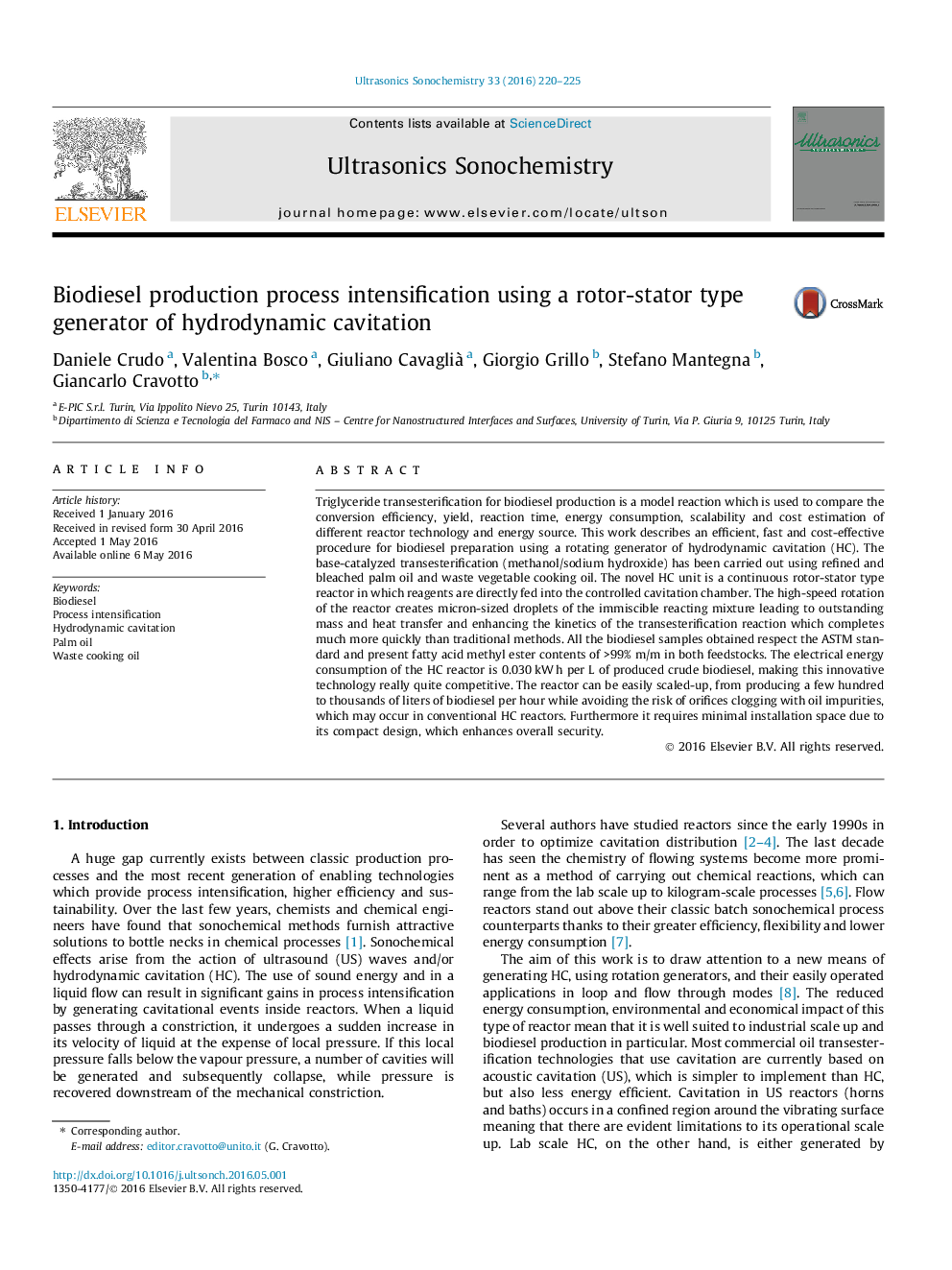| کد مقاله | کد نشریه | سال انتشار | مقاله انگلیسی | نسخه تمام متن |
|---|---|---|---|---|
| 1269318 | 1496871 | 2016 | 6 صفحه PDF | دانلود رایگان |
• Fast and cost-effective procedure for biodiesel preparation using a rotating generator of hydrodynamic cavitation.
• Base-catalyzed transesterification of refined and bleached palm oil and waste vegetable cooking oil.
• FAME conversion greater than 99% m/m.
• Energy consumption required to produce biodiesel was 0.015 kW h/L.
• The maximized mass transfer and alcohol vapour generated in the hot spots strongly accelerate the transesterification.
Triglyceride transesterification for biodiesel production is a model reaction which is used to compare the conversion efficiency, yield, reaction time, energy consumption, scalability and cost estimation of different reactor technology and energy source. This work describes an efficient, fast and cost-effective procedure for biodiesel preparation using a rotating generator of hydrodynamic cavitation (HC). The base-catalyzed transesterification (methanol/sodium hydroxide) has been carried out using refined and bleached palm oil and waste vegetable cooking oil. The novel HC unit is a continuous rotor-stator type reactor in which reagents are directly fed into the controlled cavitation chamber. The high-speed rotation of the reactor creates micron-sized droplets of the immiscible reacting mixture leading to outstanding mass and heat transfer and enhancing the kinetics of the transesterification reaction which completes much more quickly than traditional methods. All the biodiesel samples obtained respect the ASTM standard and present fatty acid methyl ester contents of >99% m/m in both feedstocks. The electrical energy consumption of the HC reactor is 0.030 kW h per L of produced crude biodiesel, making this innovative technology really quite competitive. The reactor can be easily scaled-up, from producing a few hundred to thousands of liters of biodiesel per hour while avoiding the risk of orifices clogging with oil impurities, which may occur in conventional HC reactors. Furthermore it requires minimal installation space due to its compact design, which enhances overall security.
Journal: Ultrasonics Sonochemistry - Volume 33, November 2016, Pages 220–225
